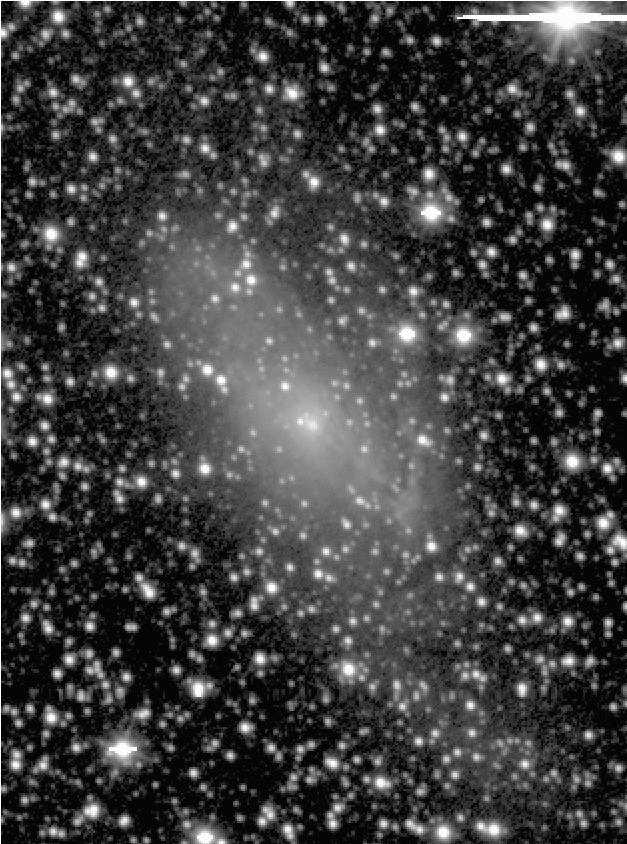

De Vaucouleurs Atlas Type: SAB(rs)bc
Filter: I (stars)
Telescope: KPNO 0.6/0.9-m
North left , East
Field Dimensions: 10.6 x 14.3 arcminutes
RC3 Type: SAB(rs)bc:
RSA Type: -----
Surface Brightness Range Displayed: 18.0-25.0 mag per square arcsec
Absolute Blue Magnitude: -20.8
De Vaucouleurs Atlas Description:
This heavily obscured galaxy is probably the nearest major barred spiral. The images shown are from Buta and McCall (1999). The galaxy suffers considerable foreground star contamination, but in the other image these have all been removed. The closest we can come to an optical atlas-quality image of this galaxy is in the I-band, which reveals a clear bar and what appears to be a four-armed spiral pattern. The appearance of the arms in the bar region caused Buta and McCall (1999) to classify the variety as (rs); however this is uncertain based on the excellent image from 2MASS (Jarrett et al. 2003). At issue is the nature of the broad, diffuse spiral-like region off the northeast side of the bar. Hurt et al. (1993) interpreted this feature as a possible small companion galaxy interacting with Maffei 2 . In the I-band image, however, this feature seems to have a counterpart on the opposite side, while in the 2MASS image, no such counterpart is seen. Since the I-band image is heavily cleaned and the details may not be reliable as we would like.
The Sbc type is based on the openness of the outer arms, which we expect would be patchier in blue light. We cannot show Maffei 2 in blue light because of the more than 6 magnitudes of extinction in that waveband (see book section 2.14). In the 2MASS database, the bar is more conspicuous in the K-band than in the I-band (Jarrett et al. 2003).
Maffei 2 is also one of the nearest galaxies showing a central starburst (Rickard et al. 1977). The nucleus has been detected at Br-alpha and Br-gamma (Ho et al. 1990) and 10 microns (Ho et al. 1989), and the galaxy has been mapped in radio continuum (Hurt et al. 1996), HI (Hurt et al. 1993), and CO (Mason and Wilson 2004). These observations all support the idea of a central starburst in Maffei 2 .